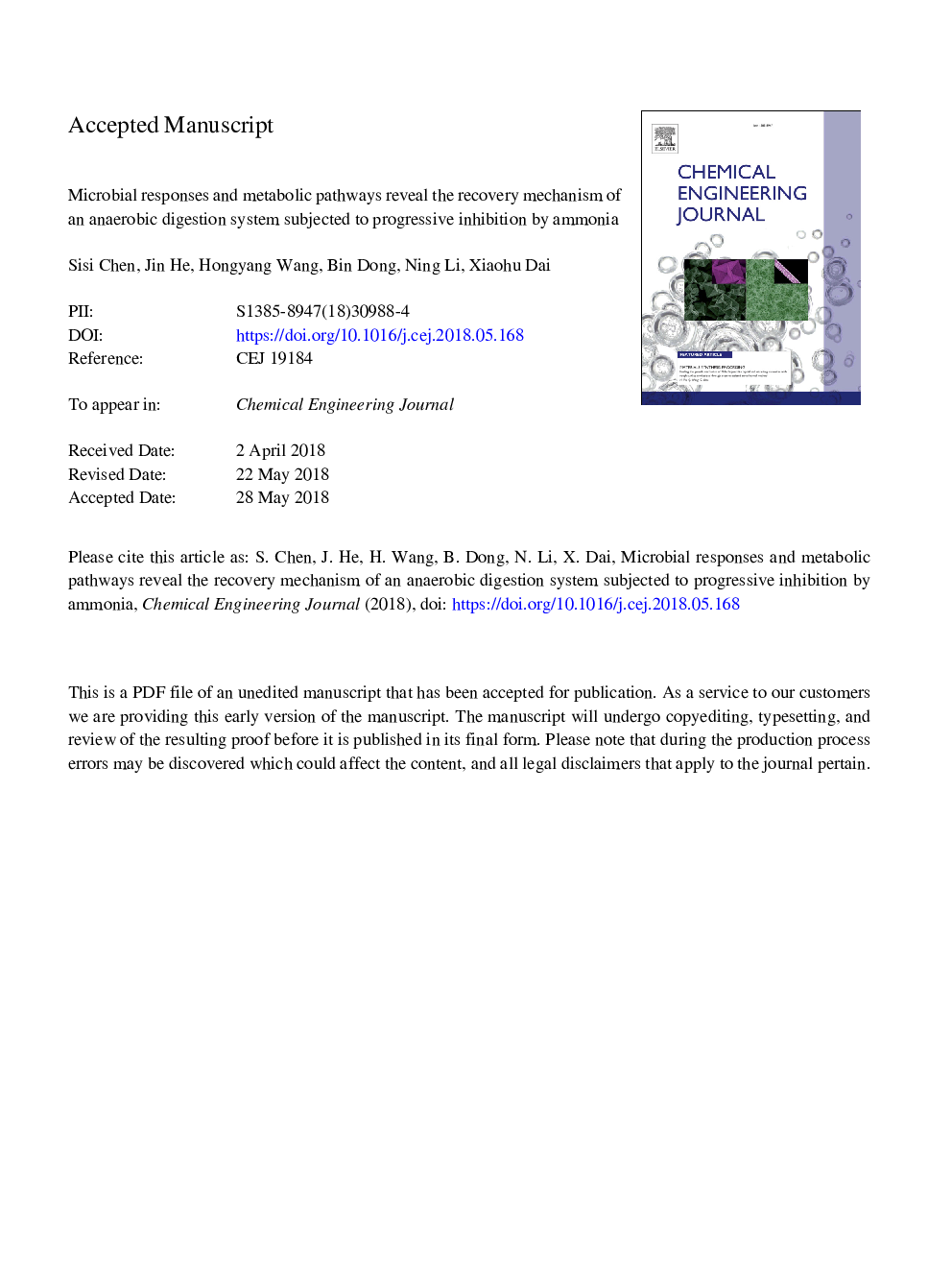| Article ID | Journal | Published Year | Pages | File Type |
|---|---|---|---|---|
| 6578267 | Chemical Engineering Journal | 2018 | 36 Pages |
Abstract
To overcome the bottlenecks for alleviation of ammonia-driven inhibition and realize performance optimization, recovery mechanism of an anaerobic digestion system subjected to progressive inhibition by ammonia were investigated. Methanosarcina whose abundance declined with the increase of ammonium nitrogen concentration, was found to be a quickly recovering archaeal genus, mainly responsible for the recovery of methane production after the severe inhibition. Bacteria belonging to Firmicutes, which played important roles in acidogenesis, were resistant to the elevated total ammonium nitrogen concentration. Importantly, they were also the most rapidly growing population during the recovery. Within the phylum Firmicutes, enriched protein-utilizing genera Tissierella and Lutispora (belong to the order Clostridiales), were found to be greatly correlated with the recovered biogas production and Methanosarcina. Moreover, with the recovery of the biogas production and protein-utilization bacteria, the metabolism of protein which were inhibited during the severe inhibition basically recovered.
Related Topics
Physical Sciences and Engineering
Chemical Engineering
Chemical Engineering (General)
Authors
Sisi Chen, Jin He, Hongyang Wang, Bin Dong, Ning Li, Xiaohu Dai,
